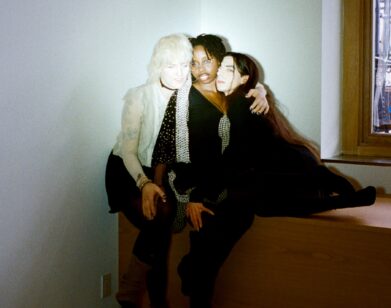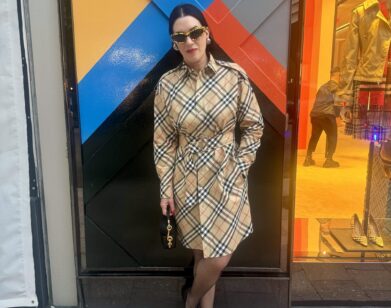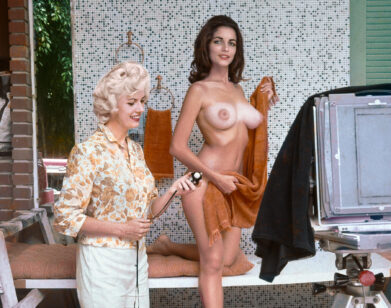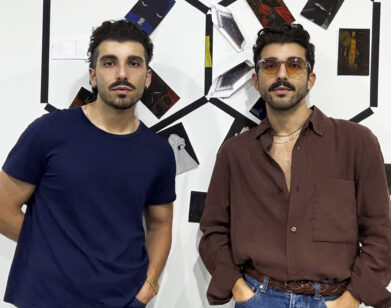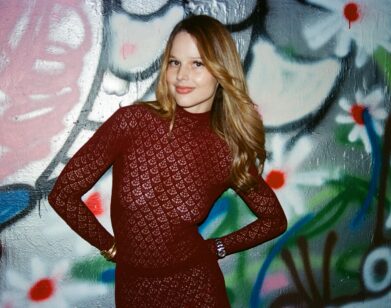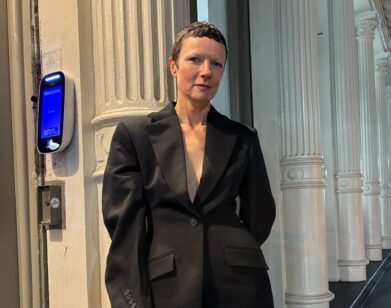What Lies Beneath
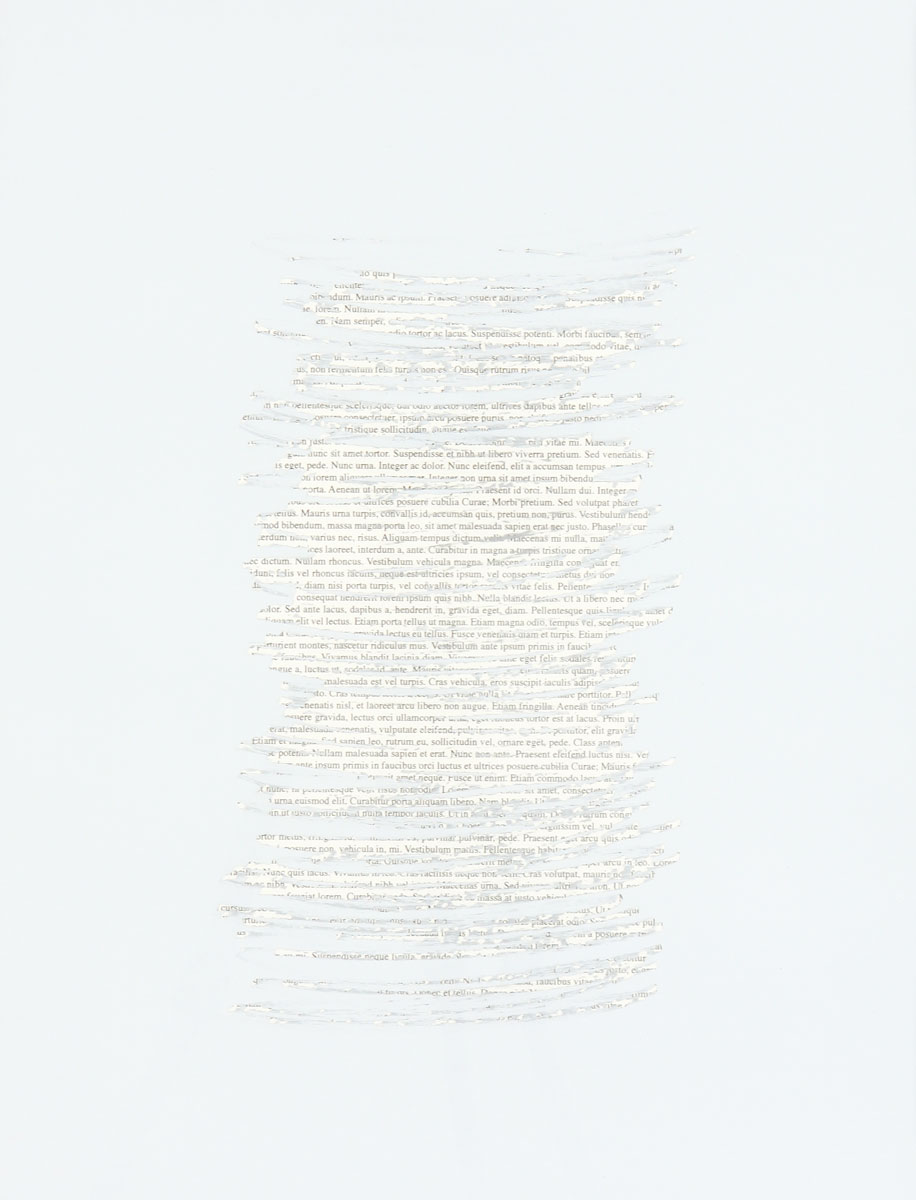
Self-portrait (golden sections), 2009
Matt Sheridan Smith’s art takes the form of finite philosophical problems—meditations on an artist’s labor, the limitations of self-portraiture, the meaning of representation—dressed in the most essential means. Blanks, Templates, Undos, Redos, Smith’s debut solo exhibition, features four empty pedestals, a sparse, monochromatic series of works on paper, and a box of un-bent neon tubes spilled out on the floor—each of them a self-deprecating commentary on the incompleteness of art. Only a film of doors energetically opening and closing, culled from Robert Bresson’s social critique L’Argent, projected on the wall, breaks up the composure of Smith’s confounding, concise articulation of the nature of art making.
Self-portrait (golden sections) is an investigation of the Golden Ratio, a formula applied to sculpture, architecture, and early typography and based on the body’s proportions. Smith used his own body’s dimensions to determine the scale of four whiter-than-white pedestals, which then recall minimalist sculptures. It’s a clever self-portrait of the artist as a pedestal and a platform for ideas. Elsewhere, Smith screenprinted Lorem ipsum, a dummy text used by typographers for centuries and based on Cicero’s writings, onto paper. He covered it with a second layer of ink, which he then scratched off in part. Titled Neither is there anyone who loves pain itself for the literal translation of the Lorem Ipsum text, is exhibited here in several incarnations and color combinations; they’re are literal attempts to reveal (or not) the cryptic words beneath the screenprinted surface. (LEFT: NEITHER IS THERE ANYONE WHO LOVES PAIN ITSELF (GRAY/BLACK), 2009)
Steve Pulimood: It was very easy to overlook at the current show, but on further thought I feel Self-portrait (golden sections) 2009 is one of the most ribald pieces of yours that I’ve seen. It’s a representation of the body couched in the terms of an ancient ratio, but it’s also a bunch of banal sculptural pedestals.
Matt Sheridan Smith: That work sits very quietly but it’s really quite aggressive. The work is in a way the most voided out, empty piece in the show, yet it contains the most pressing content, the most concentrated “presence” of the artist. I had been interested in using display, and the rhetorical dimensions of display, as a way of generating sculptural form. I was considering pedestals as simply forms themselves, and an array of pedestals as a sort of readymade minimalist sculpture. But the way the piece ended up articulating itself, as a set of pedestals with dimensions generated from measurements of my own body that mirror techniques and formulas used in Classical sculpture, came out of a trip to the Vatican I took last year.
SP: Several Classical themes—the Lorem Ipsum, the use of golden ratios—are woven through the exhibition. Why?
MSS: The whole Classical thread in the exhibition kind of came out of an encounter with a large Greek bronze. There aren’t many of them left for numerous reasons; I was told only between ten and twenty still exist. Many were melted down by the Romans for the metals to make weaponry. The one I was looking at, I was told, only survived because it had been hit by lightning. So it was, in effect, “cursed” by the Gods, and thus unfit for Roman soldiers about to head into battle. They buried it upside down. It was on a giant plinth, which became like a headstone.
SP: This Greek bronze must have made a powerful impression on you.
MSS: It sat there for who knows how long. I had a really kind of corny, auratic experience in front of that sculpture. Even so, building the anecdotal origin of the piece directly into the work would dictate too much meaning from my end and not leave enough room for others. I think my work, with all the standards and heuristics and rules, could be misinterpreted as process driven, or even mechanical, but really I’m just trying to leave a lot of room. I try to leave myself out if it wherever I can. Of course I’m actually built into the dimensions of the piece, but I’m also kind of the part that’s buried upside down.
SP: Did you always plan on being an artist?
MSS: I came to making art in a rather roundabout way. Or, rather, came back to making art. I had planned to go to art school but in the final decision phase ended up focusing entirely on programs where there was a dual degree option. I have always had a strong interest in writing and in philosophy, media studies, “theory” in shorthand, and I suppose I wanted to do that work among people who were doing it firstly, and not as an elective. Long story short, I dropped out of the studio program before it really even started. It wasn’t until a couple years after I finished my degree (in philosophy and media studies in the end) that I came back to the idea of producing art in the way I am now.
SP: This is not intended to be a flippant question, but why make art?
MSS: I would say for me it was… a disappointment in writing, although writing is still very important to me. I think at a certain point I saw a type of production in contemporary art where things could be stand-ins for ideas and that allowed them to generate more ideas in a way that was simply more fluid and open ended than the type of writing I was interested in.
SP: Did the art begin as an avenue to vent certain problems that you felt needed to be addressed?
MSS: It could be that what attracts me to art objects is their potential for conciseness. The artworks I respond most too tend to be extremely concise. Not only does this avoid the tedium of explaining everything, or the pressure to ground it absolutely (be that a theoretical or referential grounding, both types I tend to try to use sparingly)—but art also does something very productive with the negative space around it, the unexplained space. What I mean is the way that space gets filled out by viewers, critics, curators, other artists. Even though a lot of my work stems from pretty articulated and intentional ideas, the works that make it out are always the ones where there’s no possibility of my perspective on the work becoming the dominant or only reading.
Blanks, Templates, Undos, Redos is on view at Lisa Cooley Fine Art until May 24. Lisa Cooley is located at 34 Orchard Street, New York. Smith will contribute to a group show, “Unaddressed Circumventions: Folds from a Failed Suicide,” which opens this week at Gresham’s Ghost, 521 West 26 St, New York.

